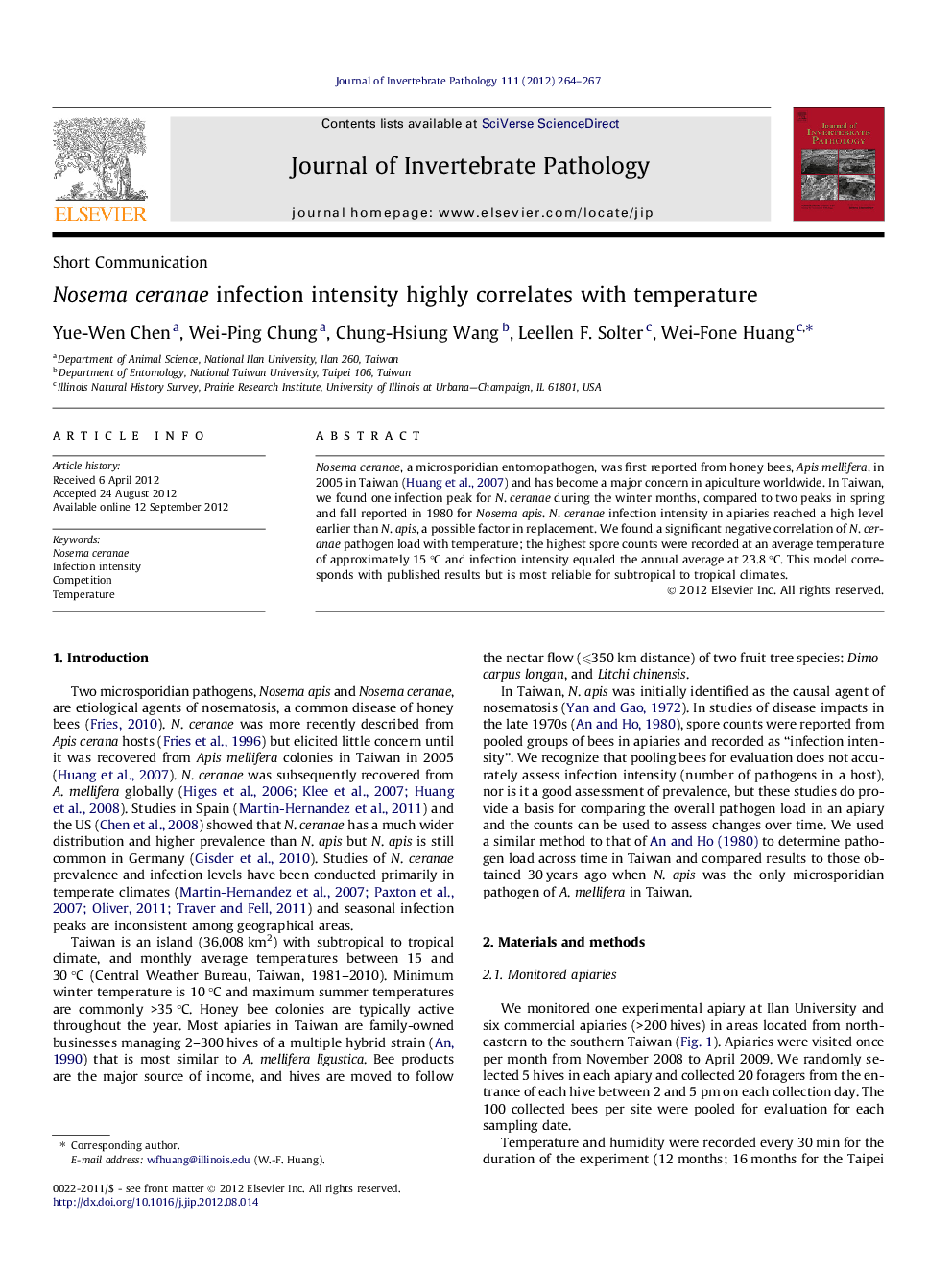| Article ID | Journal | Published Year | Pages | File Type |
|---|---|---|---|---|
| 4557870 | Journal of Invertebrate Pathology | 2012 | 4 Pages |
Nosema ceranae, a microsporidian entomopathogen, was first reported from honey bees, Apis mellifera, in 2005 in Taiwan ( Huang et al., 2007) and has become a major concern in apiculture worldwide. In Taiwan, we found one infection peak for N. ceranae during the winter months, compared to two peaks in spring and fall reported in 1980 for Nosema apis. N. ceranae infection intensity in apiaries reached a high level earlier than N. apis, a possible factor in replacement. We found a significant negative correlation of N. ceranae pathogen load with temperature; the highest spore counts were recorded at an average temperature of approximately 15 °C and infection intensity equaled the annual average at 23.8 °C. This model corresponds with published results but is most reliable for subtropical to tropical climates.
Graphical abstractNegative correlation of Nosema ceranae infection levels with average temperature.Figure optionsDownload full-size imageDownload as PowerPoint slideHighlights► In warm climates Nosema ceranae reaches intensity peak earlier than Nosema apis. ► N. ceranae intensity was found to be correlated with the average temperature. ► The intensity peak of N. ceranae occurs at approximately 15 °C.
